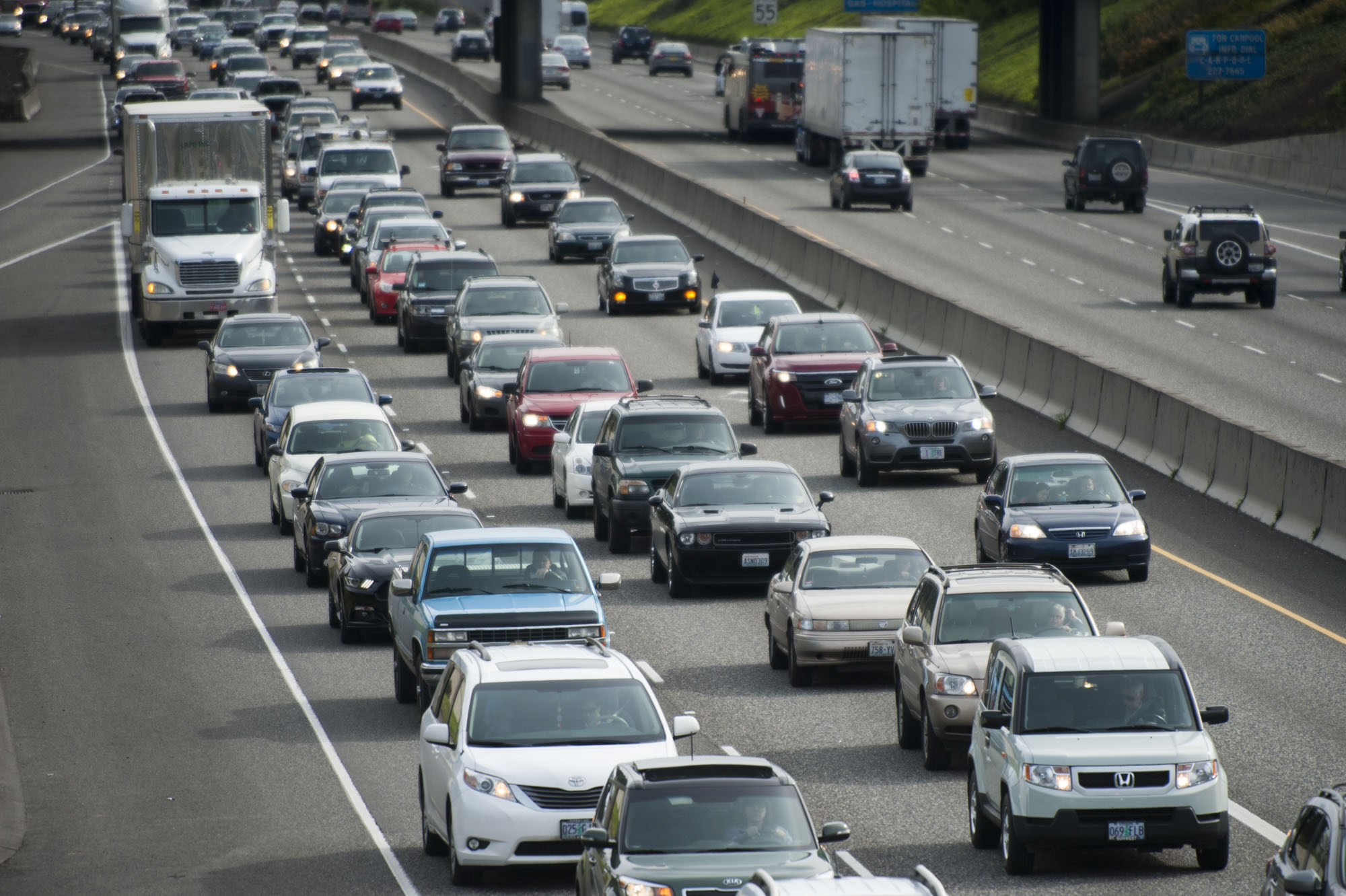Oregon lawmakers got one step closer to passing a massive transportation package that could bring rush-hour tolls to interstates 5 and 205, among other new taxes and fees to improve the state’s declining infrastructure.
The Oregon Senate on Thursday approved the $5.3 billion transportation bill approved by the Oregon House the day before and sent it to Gov. Kate Brown to be signed into law.
The bill would create a transportation commission that would seek approval from the Federal Highway Administration by Dec. 31, 2018, to put tolls on I-205 and I-5 beginning at the state line and ending where the two connect near Tualatin, Ore.
The bill directs the commission to “implement value pricing to reduce traffic congestion. Value pricing may include, but is not limited to, variable time-of-day pricing.”
The commission would also work with Washington officials to establish and operate tolls at the state line. What the tolls would cost or what the system would look like isn’t yet clear.
But the bill specifies that toll revenue would go into a congestion-relief fund.
Multiple options
What the tolling system would actually look like is still unclear, but that was by design, according to Oregon Department of Transportation Assistant Director Travis Brouwer.
Value pricing can mean a number of things, including constructing new high-occupancy tolling lanes, setting variable pricing on bridges or converting existing lanes into toll lanes, to name just a few. So Oregon officials will consider their options and craft a plan before they apply to the federal government, he said.
“We’ll work with regional stakeholders to determine what objectives we’re seeking to reach using value pricing, then we’ll look at what alternatives there might be to apply it and which ones best meet those objectives,” he said. “Then we’ll go to the federal government once we’ve developed a plan.”
Brouwer said he expects those conversations to begin “fairly expeditiously,” in order to meet the 2018 deadline. He also said ODOT will have to evaluate what kind of pricing the federal government will tolerate and if the agency will need to request a waiver in some cases.
Proceeds from the tolls would likely contribute to widening projects on I-5 through Portland’s Rose Quarter and other highways in the state, according to The Oregonian.
Managing traffic
Mark Hallenbeck, director of the Washington State Transportation Center at the University of Washington, said value pricing can improve traffic flows and generate revenue by getting people to think differently about how they drive, rather than roadway expansion alone.
“Transportation is an economic good; when you make something cost more people buy less of it. When it’s cheaper, people buy more of it,” he said. “When you widen the road, congestion will go down — but it fills back up again.”
Rep. Julie Parrish, R-West Linn, whose district aligns where I-5 and I-205 meet, voted against the bill and said she was “philosophically against tolling infrastructure we already own.”
She also argued that the freeway system in Oregon is part of a larger national network that is paid for by drivers. She objected to singling out those that drive in and out of the Portland metro area.
“We can’t look at those projects in a vacuum,” she said. “I don’t represent Washington, but you have people who live on your side of the river and come and are economically productive in our state and contribute payroll taxes.”




